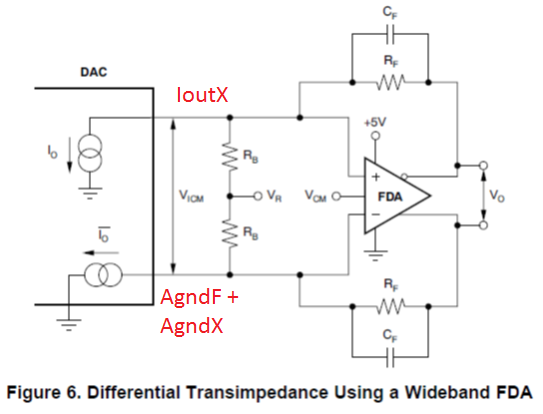End application: Temperature controlled precision DAC
Dear experts, can you please advise if we can use DAC8814 DAC's current outputs IoutX and AgndF+AgndX as a complementary pair for creating an output differential signal? We are looking for an output arrangement similar to the one described in Application Report SBAA150.
The pair AgndF+AgndX is intended to be connected to ground according to datasheet. We understand that voltage AgndX to DGND must be less than +/- 0.3V. So we plan to keep output pins IoutX, AgndF and AgndX at the ground potential.
What implications may prevent us to connect AgndF and AgndX wires together and use them as a second current output complementing the main current output IoutX?
Background: We are looking for a possibility to obtain very low noise well below the quantization noise of DAC. We consider the differential signalling as a measure to achieve a lower noise.


